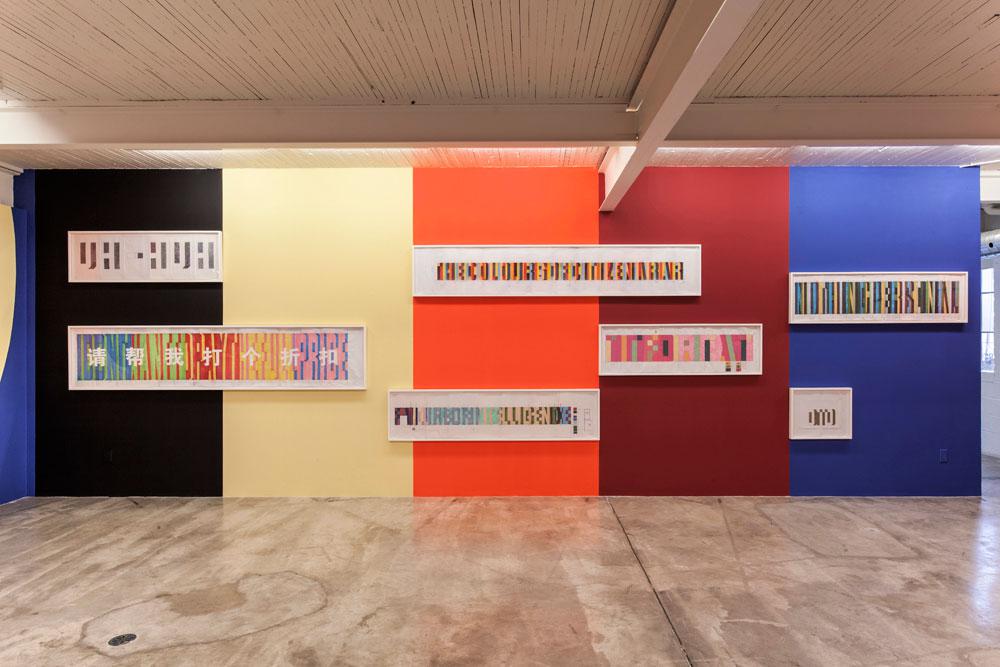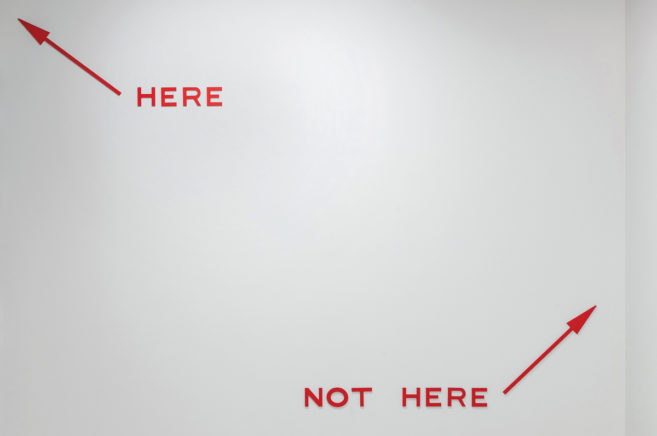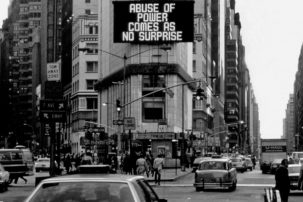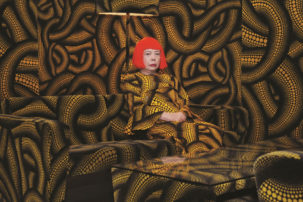Do we take Garry Neill Kennedy for granted? To those familiar with the history and work of the Halifax-based artist, it might seem a silly, even spurious, question. After all, for some five decades, Kennedy has been a near-legendary figure on the Canadian conceptual art scene. Consider his storied tenure as president of the Nova Scotia College of Art and Design during the school’s 1960s and 1970s avant-garde heyday (an era Kennedy catalogues in the recent MIT Press–published tome The Last Art College), or his extensive exhibition track record punctuated by a career retrospective in 2000 at the National Gallery of Canada as well as major installation projects at museums and galleries worldwide—not to mention the Order of Canada and a Governor General’s Award in Visual and Media Arts.
Yet for all these achievements, one could say that Kennedy has always remained a figure that the Canadian art world can’t quite pin down. Maybe there are some regional biases involved: for many, the long and deeply influential shadow of his NSCAD years have pegged him as a “Halifax” artist, a double-edged distinction that lands him slightly off-centre from the dominant art narratives of Vancouver, Toronto or Montreal. The nature of his conceptually driven work implicates exhibition spaces in a critical appraisal of institutional superstructures both in and out of the art world (again, a double-edged sword). There is a kind of large-scale, serial approach to his practice, whether in his co-opting of commercial paint colours or in his trademark Superstar Shadow typeface, that, for some lazier viewers, might seem a bit rote. And while Kennedy is well represented in major museum permanent collections, on the commercial front his work remains somewhat of an anomaly, a fate summed up by his connection to the now-defunct Goodwater Gallery, one of the most adventurous and unconventional (and for those reasons, ultimately untenable) dealerships of late on the Toronto art scene.
Of course, none of this has slowed Kennedy down. The past year alone has seen the publication of The Last Art College as well as Garry Neill Kennedy: Printed Matter, 1971–2009 by the National Gallery of Canada. His wall work SPOTTED, based on CIA rendition planes, is a highlight of the much-feted “Oh, Canada” survey show at MASS MoCA. In the last 12 months, he also opened exhibitions of work in Toronto, Halifax and New York, where he was living on an extended stay in conjunction with partner Cathy Busby’s artist residency at the Union Theological Seminary. And for the winter school term, he and Busby will be visiting artists at Emily Carr University of Art and Design in Vancouver.
All of this brings us to Kennedy’s latest exhibition, closing this weekend at Diaz Contemporary. Featuring a new large-scale wall painting set alongside working drawings and paintings dating back to 1992, the show offers a fresh look at Kennedy’s longstanding concerns and strategies.
To start, three walls of the front gallery are taken up with a new floor-to-ceiling text work QUID PRO QUO, which plays on the language of favours given and taken both on and off the record—a recurring theme in the artist’s ongoing Ethics 101 series. (Past works in the series have included TIT FOR TAT, You Scratch My Back And I’ll Scratch Yours and AN EYE FOR AN EYE.)
In a notable yet subtle departure, Kennedy has traded the martial leanings of Superstar Shadow (which was derived from the typeface used on military warships docked in Halifax) for Chisel type, a choice that, as the gallery press release states, “is associated with permanence and monumentality.” And monumental it is, even intimidating, as QUID PRO QUO looms on the gallery walls. The work’s colour scheme, which includes black, yellow, red and blue—a palette reminiscent of Kennedy’s 2007 work The Colours of Citizen Arar which was based on descriptions of injuries sustained by Syrian-Canadian Maher Arar while under unwarranted detention—is supercharged with swatches of prison-jumpsuit fluorescent orange, adding a jarring, almost kinetic effect to the hard-edged abstract rhythm of the painting.
It’s easy to get caught up in this buzzing intensity where word and colour, colour and word spar for visual dominance. But this blurred middle ground is perhaps exactly where Kennedy intends us to be, defining a perspective where the balanced order of language, image and meaning has been knocked askew in order to reassess the correlations and interdependences between them. True to his conceptual roots, it is a headspace carefully calculated by Kennedy, as evidenced in a selection of plotted schematics for past Ethics 101 works arranged on another wall.
Kennedy offers a somewhat calming counterpoint in the gallery’s back room, where his 1998 painting series THE FOUR SEASONS is installed. Here we see Kennedy working in a different, though not incomparable mode, dividing colours from commercially available interior paints into two conceptual quartets of seasonal paintings based on trademark names—for Spring, we see “Apple Blossom” and “March Feeling”; for Summer, “Summer Butterfly” and “Summer Tan”; for Autumn, “September Glory” and “October Sky”; and for Winter, “Blizzard” and “Frozen Moat.”
As one might expect from the source materials, there is a kind of soothing, almost cloying, cohesion to each of these paintings, a not unwelcome effect after walking through QUID PRO QUO. And Kennedy’s brushstrokes, whether defined by plywood grain in one case, or by seemingly hasty mark-making on canvas in the other, capture a fleeting, spontaneous rhythm which also stands in contrast to the linear intensity of his newer work. So here we find ourselves once again transported to that liminal middle ground—between cycles of meaning and existence. And that’s nothing to take for granted.









